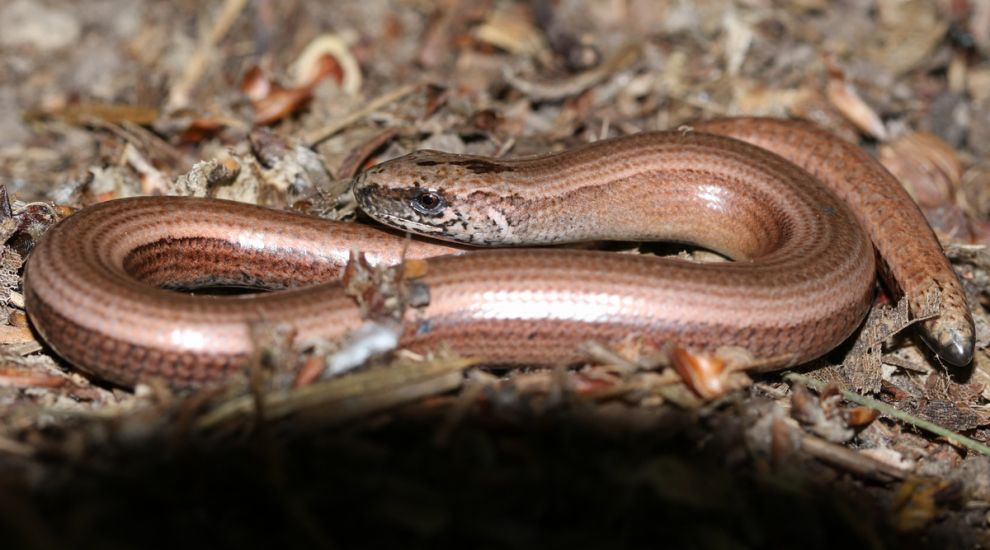

The Jersey Biodiversity Centre (JBC) is excited to share a fantastic free summer activity to spot wild reptiles across the island.
You need to spend 30minutes visually looking for reptiles and count what species you saw and how many. There are four native reptiles you could spot and by sharing your survey you can help in their conservation.
What is Reptilewatch JE? - Search for reptiles and share your sightings to help reptile conservation
Why reptiles? - Jersey has four native reptile species, some of which are rarely seen and are limited to certain habitats.
Join in! Level 1 - Spend 30 minutes looking for reptiles and send us your results.
The four native reptiles to spot are:
The green lizard (Lacerta bilineata) is typically bright green and can usually be found in coastal grassland, heathland and dune habitats. They are most likely to be seen on warm sunny days.
The slow worm (Anguis fragilis) is a legless lizard ranging from grey to brown or copper in colour. They are rarely seen out in the open, preferring to spend much of their time underground or in amongst low-level vegetation and leaf litter. They are widespread in Jersey and can be found in a variety of semi-natural and semi-urban habitats including allotments, cemeteries and gardens.
The wall lizard (Podarcis muralis) is typically brown but can be variable in colour. They are most commonly found in the north and east of the island, favouring fortifications and dry stone walls.
The grass snake (Natrix helvetica) is Jersey’s rarest and most elusive reptile. It is also Jersey’s only snake species, and does not occur anywhere else in the Channel Islands. This non-venomous snake can grow up to a metre long, with an olive green or brown body with black bars along it and a yellow collar on the neck. They are distributed in the west of the island, inhabiting grassland, wetland, dune and heathland areas.
We’d like you to search for reptiles all over Jersey, that could be in your garden, at work or when out for a walk. Get involved and share your reptile survey here.
Our top reptile watching tips are: 1. Get out early in the day as reptiles will be basking to soak sunshine before heading off to hunt. They are a lot slower in the morning than over lunch time which gives you the best chance of spotting them. 2. Walk slowly as you move around the environment, reptiles can sense vibrations and will speedily run off if they feel your footsteps getting too close. 3. Take your time visually scanning the environment to spot them, reptiles are very well camouflaged and so it can take time to get your eye in to spot them hiding in gaps of the vegetation.
Sarah Maguire, Education and Outreach Officer for the Jersey Biodiversity Centres, says: “We need the public’s help to survey reptiles in Jersey and this project is a great way to get out exploring our island’s wild spaces and contributing towards the bigger conservation picture. All ages can get involved spotting reptiles and level 1 is a complete beginner’s guide to getting into conservation science”.
ReptileWatch Partners: Jersey Biodiversity Centre, Government of Jersey, Jersey Amphibian and Reptile Group (JARG), Amphibian and Reptile Conservation (ARC).